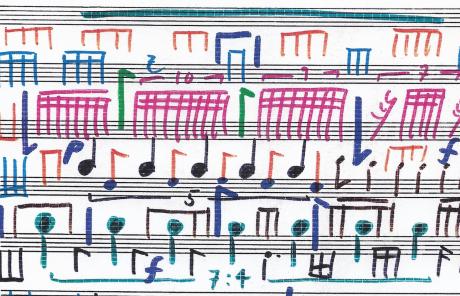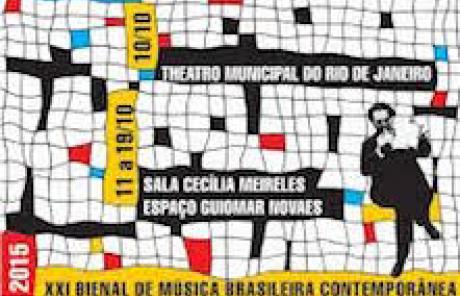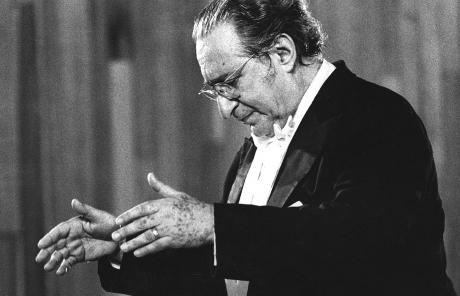Primarily instrumental, Choro is one of the most original musical styles in Brazil, its origins extending back to the 19th century. Borns in Rio de Janeiro, Choro rose to national prominence and became a symbol of Brazilian culture.
It is said that the "father of choro" was Joaquim Callado Jr., a talented mulatto flutist who formed a group of musicians called "Choro do Callado" in the 1870s. Historians generally agree that Choro, also known as Chorinho, is a unique style of interpreting various musical genres. In the 19th century, many European genres such as polka, the waltz, schottisches (a Bohemian country dance) and quadrille were played by choro groups in an original manner. It was from this style of playing that the "genre" of choro gained its form.
Want to get to know a famous choro composed by one of the most important Brazilian musicians of all time?
The history of Choro since Callado
We could say that the history of Choro began in 1808 with the arrival of Portugal's royal family in Brazil. Promoted as the capital of the "United Kingdom of Brazil, Portugal and Algarves", Rio de Janeiro underwent urban and cultural reforms with the creation of public sector jobs. Accompanying the royal court were European instruments such as the piano, clarinet, guitar, saxophone, bandolim and cavaquinho, and music from European dance salons, including the waltz, quadrille, mazurka, modinha (a type of sentimental Portuguese song), minuet, schottische and, especially, polka, all of which became fashionable in the dance salons of that era.
The urban reforms, instruments and foreign musical styles, coupled with the abolition of slavery in Brazil in 1888, can be seen as a "recipe" that led to the creation of Choro, one that allowed for the emergence of a new social class in the suburbs of Rio de Janeiro - a middle class composed of public servants, instrumentalists from military bands and small business owners who were largely African in origin.
Origin of the word “Choro”
There is no consensus among scholars over the origin of the word "choro", which has many meanings.
One theory is that Choro is derived from emotional style of playing foreign music in the late 19th century, which led its followers to call it 'music that makes cry' ('choro'means 'a cry or lament' in Portuguese). The ensemble of musicians itself came to be called Choro, as in "Choro do Callado".
According to another theory, the term is derived from "xolo", a type of dance that plantation slaves engaged in. Confused with the Portuguese patronym, it came to be known as "xoro", which, in the urban setting, was eventually spelled with "ch".
Still other scholars argue that the origin of the term comes from the melancoly feeling associated with use of the bass as a melodic counterpoint in the guitar, known as "baixaria".
Classic choro
A classic Choro composition is comprised of 3 parts that are played in a rondo form, following as AABACCA pattern. The first part, A, is tonic, while the second part, B, is dominant (or relative of the tonic is minor) and part C is subdominant. For example, if part A were in C major, part B would be in G major and part C, in C minor. If part A were in A minor, part B would be in E major and part C, in A major.
Not every choro piece is structured in this way, however. Many variations exist, including Choros with lyrics and what are called chorinhos-canção. For example, the piece "Odeon" is a testament to the fact that an instrumental choro can be perfectly be sung.
In the following image we can see the cover of the first book ever written about Choro.
Its author, Alexandre Gonçalves Pinto, whose mickname was "Animal", lived from about 1870 to 1940. He was a letter writter and amateur musician who played the guitar and cavaquinho.
His nickname Animal became immortalised in the book he published in 1836: "O Choro - reminiscências dos chorões antigos". Narrated in the first person, this memoir describes the personalities, parties and traditions Alexandre was witness to over his many years of playing Choro.
The “regional” ensemble and the instruments of Choro
Choro ensembles or "regionais" are comprised of wind, stringed and percussive instruments. Generally, one or more solo instruments, such as the flute, bandolim and cavaquinho, or the clarinet and saxophone, play the melody, while the cavaquinho's role is to centralise the rhythm. One or more guitars, plus a 7-stringed guitar, improvise alongside, harmonizing and forming the bassline of the group or the "baixaria". Ensembles also include percussive instruments, such as the pandeiro, while the piano and trombone were later additions. Choro musicians or "chorões" are versatile and adept at taking turns playing the solos.
Notable Choro composers past and present
Choro composers and interpreters are plentiful in number; however, several are especially worthy of mention. The composers of the past who live on in our collective memory, having left us with magnificent works, include:
Joaquim Callado
Anacleto de Medeiros
Ernesto Nazareth
Patápio Silva
João Pernambuco
Pixinguinha
Luís Americano
Villa-Lobos
Radamés Gnattali
Waldir Azevedo
Jacob do Bandolim
Notable choro groups past and present
O Choro de Calado (circa 1870)
Oito Batutas (1919)
Regional de Benedito Lacerda (1934)
Regional do Canhoto (1951)
Época de Ouro (1964)
Galo Preto (1975)
Os Carioquinhas (1977)
Nó em Pingo D’Água (1979)
Camerata Carioca (1979)




